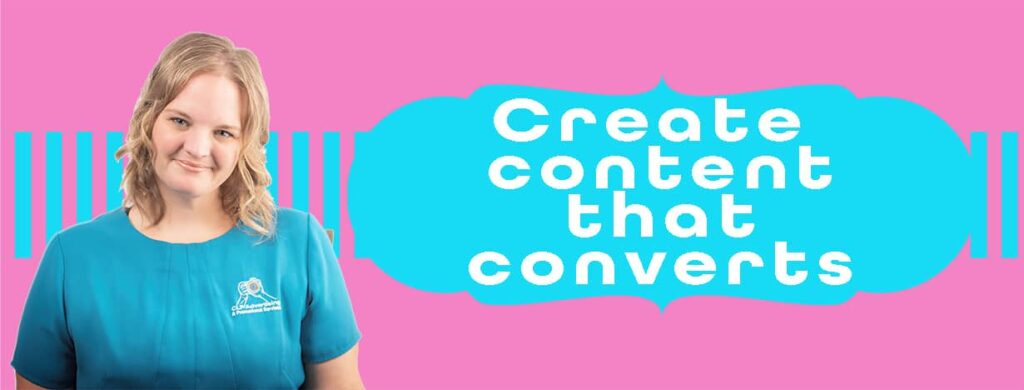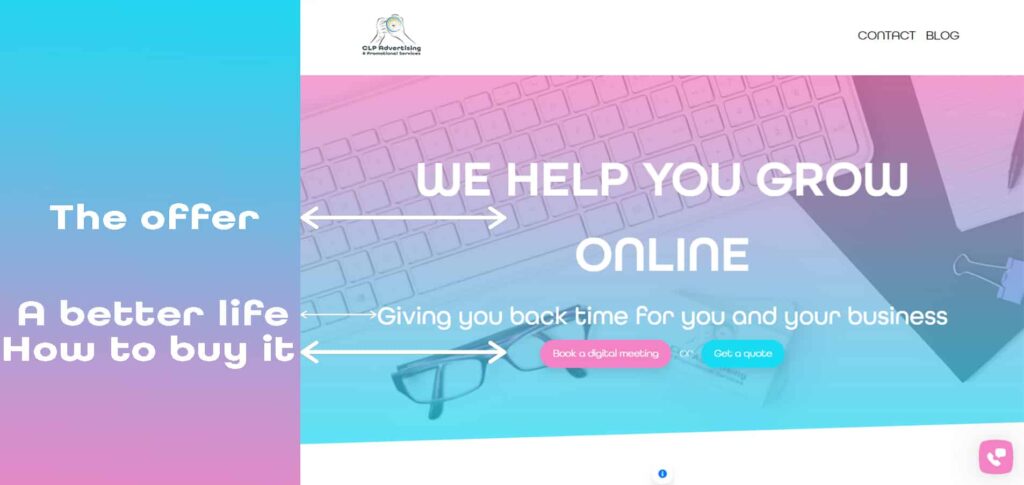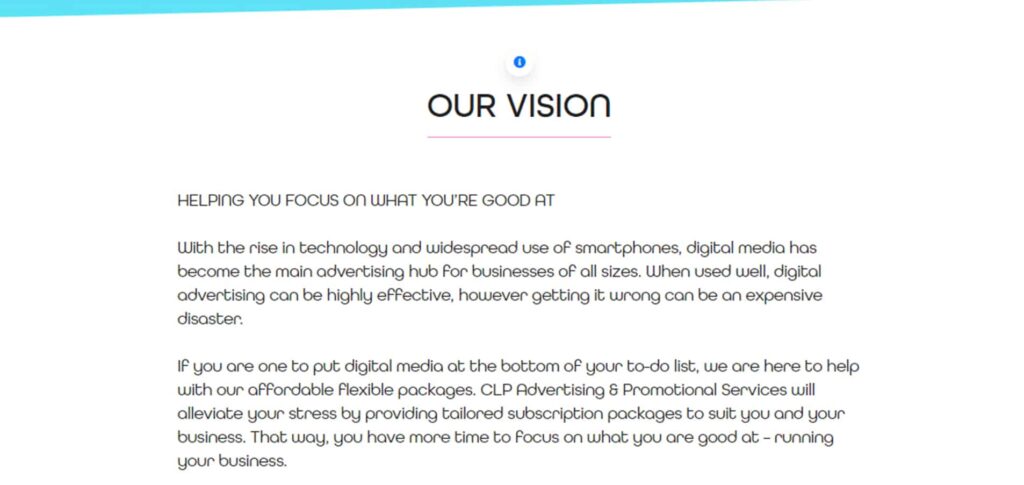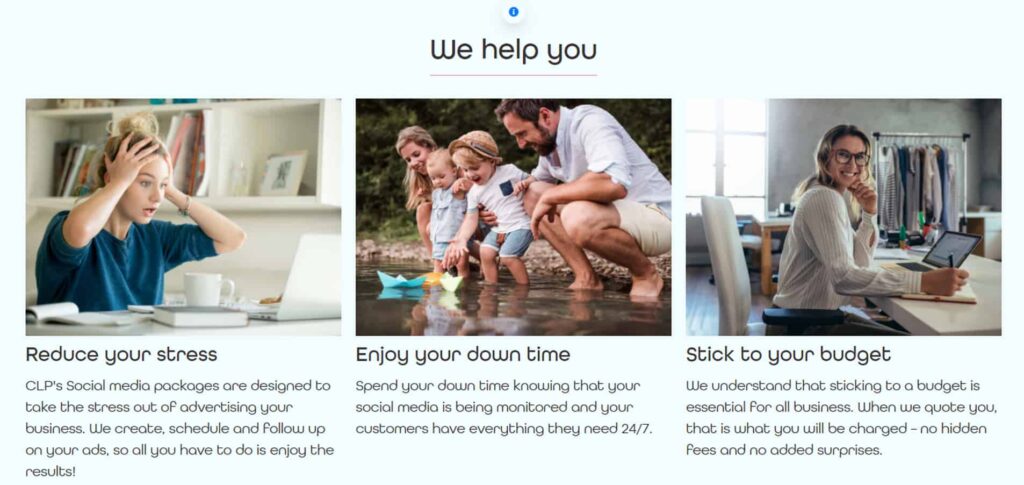When working with clients on their websites, we often discover the content is more about the business owner than the visitors. Unfortunately, this can be very off-putting to prospective customers!
To help shift the balance on your website, we have put together some tips to ensure your website content converts.
Before we start, let’s get one thing clear; your website is not for you, it is for the people who visit your site. Don’t let it end up becoming a shrine to your certifications, experience and goals. Instead, your content needs to talk to your customers and show them how you can solve their problems. At the same time, it needs to answer their questions, build trust in you and overcome their objections.
In addition, your website content needs to lay a clear path to doing business with you, as well as allow relationship-building for visitors who are not yet ready to buy. It’s no small task, but there are some tried-and-tested ways to create content that converts, starting with the header.

The header
When someone first visits your website, you’ve got less than 10 seconds before they decide to leave or stay. First impressions count here and getting it wrong means visitors will bounce. In fact, it has been estimated by some marketers that the header section makes up over half the marketing value of your website!
The goal of the header
Clarity sells, and with only seconds and a limited amount of space to work with, your message needs to be boiled down to as few words as possible.
The aim of these few words is to quickly establish three key points:
- What do you offer?
- How will it make your customer’s life better?
- How do they buy it?

The stakes
Next on your landing page is to outline the stakes of NOT doing business with you. This means reminding your potential customers of the pain they feel because of their problem (which you can solve).
To create this content, the question you need to answer here is, “what does my product or service help people avoid?”
Some examples of these pain points are:
- Wasted time
- Missed opportunities
- Lost business
- Loss of sleep
- Frustration
- Confusion

The value proposition
Here we need to contrast against the negativity by showing customers what their life will look like when we have solved their problem (or pain points).
The question we’re answering here is, “what do my customers get in exchange for their hard-earned money?”
Examples of your value might be:
- Saving money
- Saving time
- Reduced risk
- Increased status
- Ensured quality

The guide
After hooking your potential customer in with the problem and solution, it is time to get a little more personal and introduce yourself as the guide who will help your customer through their own journey.
The guide section needs to include two things:
- We feel your pain (and we’re in business to take away that pain)
- We have what it takes to solve your problem
You can write this content yourself in a few simple paragraphs, but it also pays to include some social proof. Sometimes the best way to showcase your services is with other people’s words. Using testimonials and logos of businesses you have worked with also offers a great visual.

NOTE: Remember, when writing your website copy, ensure you are thinking about the keywords in your SEO.
The plan
Your website visitor has now followed you from the header, through the problem and solution, read the testimonials and is ready to engage with you directly. The plan section clearly lays out the path they need to follow to do business with you.
The reason we need to spell this out is to avoid confusion; even though it may seem obvious to you, that doesn’t mean it is necessarily obvious to the customer. Remember, confusion kills conversions – we need to avoid it at all costs.

The wrap
The wrap is a concise summary of why your products or services are the perfect fit for your customer. As opposed to the previous sections which were very clear and to the point, in this section you can introduce a couple of long-form paragraphs to reiterate what your content has told them above.
The wrap has two primary purposes; one is to serve as the main SEO content, and two is to help make customers feel like they have done their due diligence. All of your key points are in there for your customer to consider before moving on.

The final note
While well-written content is incredibly important to the success of your website, it is no good without a stand-out platform from which to shine. Regardless of how good your copy is, if your platform, photos & SEO are not optimised, your website will be stagnant. CLP Advertising and Sitebase have partnered up and are now offer a developed website with local hosting, all ready to showcase your custom content and get more leads.
Contact us for an obligation-free quote on your optimised platform for a website that will convert.